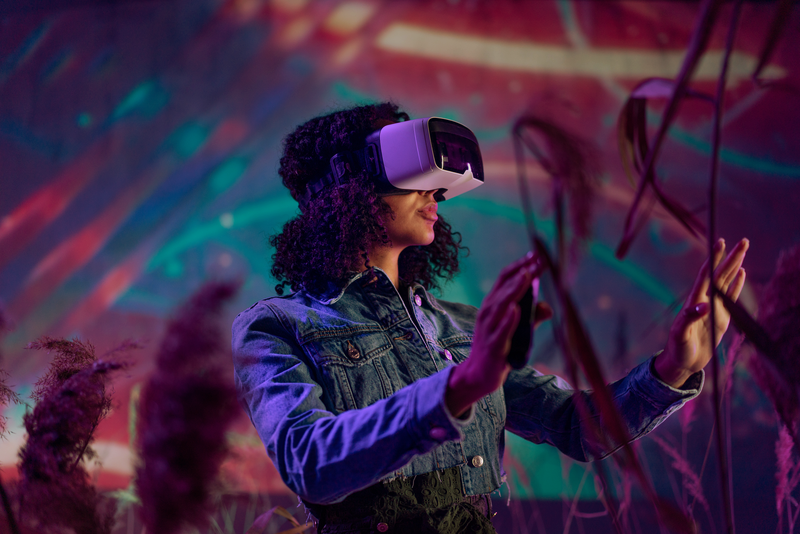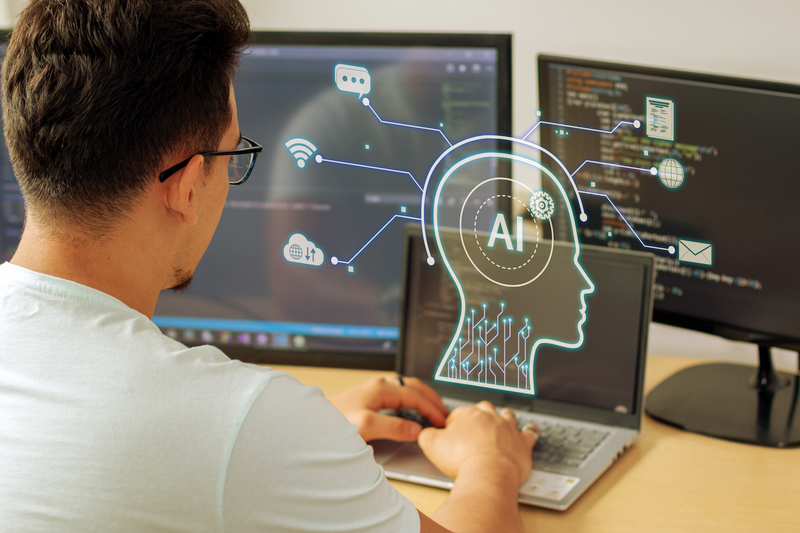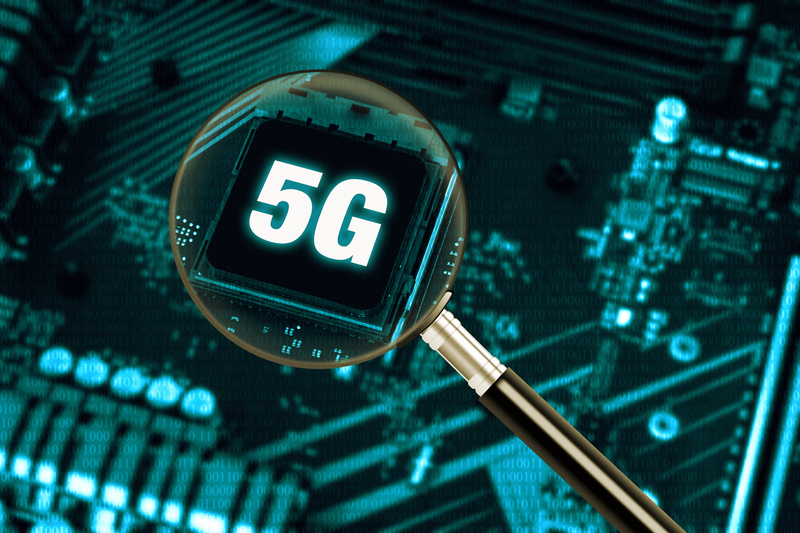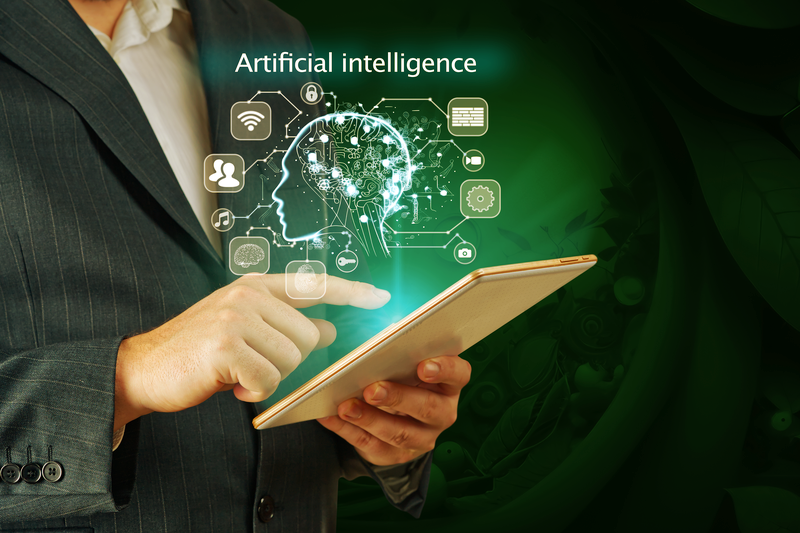Are you ready to discover the latest breakthroughs that will shape the future of technology in 2024? The search for innovation is unending, and as we enter 2024, the demand for cutting-edge solutions is steadily increasing.
However, between these emerging technologies, knowing which one of them will make an impact is not an easy task. That’s where our blog comes in.
At WillDom, we aim to be your go-to resource for navigating the world of cutting-edge technology in 2024. Bringing our expertise and industry knowledge, we present you with the most impactful solutions that should be on your radar this year.
A Closer Look at 2024’s Game-Changing Technologies
Cutting-edge technology in 2024 isn’t quite the hoverboards and Skynet we were promised. It might just be better.
Let’s start with some basics. Cutting-edge technology refers to innovative advancements in hardware, software development, and systems that transform existing processes and technological infrastructure.
At WillDom, we are thrilled by the possibilities of tech innovation. We’re passionate about discovering new methods to enhance process efficiency and create a more immersive user experience. Our goal is to blend efficiency with joy in communication. What could be more exciting?
Our team eats, sleeps, and dreams cutting-edge technology, and we can’t wait to share it with you. Let’s take a look at emerging and evolving tech that’s taking the spotlight this year. Buckle up for our top 5 picks of 2024.
1. Computer Vision
Basically, a computer looks at something and reacts intelligently to what it sees. Our first example of cutting-edge technology is a specialized flavor of artificial intelligence (AI). It gives computers and systems the ability to look at visual inputs and extrapolate meaningful information.
You might be aware of these systems being used for facial recognition in everything from security camera systems to Facebook’s eerie ability to identify you in a picture. A lesser-known current application is traffic sign recognition and detection for self-driving cars.
Another example is productivity analysis – instead of your human boss, your computer boss could tell you, “If there’s time to lean, there’s time to clean.” Quality assurance and manufacturing safety inspections could be improved by combining computer vision with deep learning.
And the healthcare implications are breathtaking. This includes detecting cancer, classifying cells, analyzing movement, and predicting oncoming health issues like strokes—our computer doctors won’t get tired during their 48-hour shifts.

2. Natural Language Processing
The baby versions of NLP are the helpful spellcheck, and the often dreaded autocomplete. “Hey Siri, what is natural language processing?” This form of AI bridges the gap between human language and computers.
When you chat with a “representative” on a company’s website, you may be talking to an NLP chatbot. Your experience will vary greatly depending on how advanced the chatbot is. At the very least, it means no more waiting on hold for hours to talk to the cable company.
Save time and work with anyone. When it works well, NLP can collect and interpret vast amounts of verbal and written information. Imagine every comment card or survey you’ve ever collected being analyzed in seconds and actionable, precise results popping up on your screen.
In the global economy, better translations and automated translators are more and more in demand. When an app on your phone can act as a United Nations-level translator, the world is your oyster.

3. Virtual Reality & Augmented Reality
We’ve packed two different technologies into this example. First, virtual reality is most common in VR headset forms like Oculus Quest and PlayStation VR. It’s often a 360-degree visual virtual environment with simulations ranging from non-immersive to fully immersive.
The implications of entering a virtual world, as we saw on Star Trek’s holodeck, are mind-blowing. From current medical training to future mental healthcare applications. From far-flung tourism to remote real estate tours, some Ready Player One-type worlds are at your fingertips if you’re a gamer.
Augmented reality adds digital information to your real-time, real-world environment. The most popular fad using AR was Pokemon Go. Remember all those people walking in parks, catching digital pocket monsters on their phones? That’s what we’re referring to.
In the retail world, hold up your phone in a store and see a moving arrow on the ground that takes you to the correct aisle. Inventory? At a glance, you can see exactly which box it is in the warehouse. Basically, every Sci-Fi eye-piece imaginable is theoretically becoming more and more possible by the day.

4. Deep Machine Learning
As artificial intelligence (AI) and machine learning continue to improve, a new cutting-edge technology subset called deep machine learning has come to the forefront. Original machine learning used simple concepts. Deep machine learning imitates how humans think and learn.
No longer limited by computing power, AI now uses an artificial neural network, similar to the human brain, to solve pattern recognition problems without any human assistance.
When paired with other technologies like visual computing, AI can access more data in more ways and analyze it better. This advancement is both astonishing and terrifying at the same time.
Our current deep machine learning helps suggest artists or products you may enjoy based on past purchases. Or mimics human voices more accurately than ever before. Or defeats every challenger in the game of Go. But the implications are immense.

5. 5G Technology
Mobile phones have become somewhat indispensable for most of us. But what if we told you that they are on the brink of becoming even more essential to our daily lives?
We’re talking about 5G technology, the latest leap forward in mobile connectivity that promises to revolutionize how we interact with our devices. At the heart of this revolution lies blazing-fast internet connections that surpass anything we’ve seen before.
With 5G, connection speeds will soar to unprecedented levels, rivaling those typically associated with optic fiber cables and cutting-edge modems.
Theoretically capable of supporting speeds up to 10 Gbps, this technology will enable users to download a staggering 1-2 Gigabytes of data per second over their mobile networks. Such speeds were once unimaginable in wireless connections, but with 5G, they’re set to become the new normal.
And beyond the download speeds, 5G will unlock a world of possibilities for cloud storage. With lightning-fast download speeds, users will be able to seamlessly store, watch, and share high-definition videos with 4k resolutions on the go, transforming the way we consume and share media.
Moreover, the quality of audio and video calls will undergo a remarkable improvement, ushering in an era of
unparalleled real-time communication. Gone will be the days of laggy, pixelated calls – with 5G, crystal-clear conversations will be the new standard.

6. Quantum Computing
This technology is groundbreaking shift that promises to shake up multiple industries and redefine what’s possible in the realm of computation.
Quantum computing lies a fundamental departure from the binary systems we’re accustomed to. Say goodbye to zeros and ones; quantum computers operate with qubits –quantum bits– that dance to the beat of their own drum. How? Through the magic of quantum physics, they embody the principles of superposition and entanglement.
Superposition is like having a light switch that can be both on and off simultaneously. This means quantum computers can explore countless computational paths at once, turbocharging their processing power.
And then there’s entanglement, where qubits form a cosmic connection that transcends distance. Change the state of one qubit, and its entangled partner feels the vibes instantaneously, regardless of space and time. It’s like having a psychic link between computational elements, allowing for lightning-fast, highly coordinated calculations.
But enough with the physics jargon. Let’s talk about applications. Beyond crunching numbers, quantum is about solving problems that once seemed insurmountable. Think unbreakable encryption schemes in cryptography, unlocking the secrets of the universe in space exploration, or revolutionizing drug discovery and artificial intelligence!

7. Edge Computing
Can you envision your data taking the fastest route imaginable, zooming from its source to your device at lightning speed? That’s the magic of edge computing–it’s like having a personal data assistant that’s always by your side, ready to deliver results in the blink of an eye.
Already, industries like healthcare, retail, and education are riding the wave of edge computing’s potential. And guess what? The excitement doesn’t stop there. We’re talking about transforming energy management and grid optimization in ways that were once unimaginable.
Think about it: with edge computing, your home’s smart meter becomes a superhero, detecting energy spikes and shortages in real time. It’s like having a guardian angel for your electricity bill, ensuring you’re always in control.
And let’s not forget about privacy! Edge computing is your data’s best friend, keeping it close and secure. No more sending sensitive information on a long, risky journey through cyberspace. With edge computing, your data stays right where it belongs–safe and sound.

8. Smart Transportation
In today’s hyper-connected era of automation and mass production, transportation has become the lifeblood of industries worldwide.
But with this surge in activity comes many challenges. Think of delays and damaged goods, the ever-present specter of logistical nightmares, and so on.
That’s where smart transportation comes in: the superhero of the modern logistics landscape. Armed with cutting-edge technologies like advanced traffic control systems and revolutionary container management solutions, smart transportation is rewriting the rulebook on how goods are moved and delivered.
With features like real-time tracking and efficient route planning, it’s like giving logistics a turbo boost, ensuring that every package reaches its destination with lightning speed and precision.
We can all agree that smart transportation is laying the groundwork for a transportation revolution. Fueled by the power of Industry 4.0, data analytics, and the Internet of Things, the transport industry is hurtling towards a future where concepts once relegated to science fiction, like hyperloops and self-driving cars, are becoming a reality.

9. Generative AI
Generative AI is changing the content game. It’s a combination of human smarts and AI prowess, and the possibilities are endless.
Picture AI algorithms, trained with the prowess of TensorFlow, Scikit Learn, and Theano, transform inputs into masterpieces that captivate and inspire.
Today, generative AI is filled with innovation as individuals and businesses alike harness its transformative potential to unlock a new era of content creation. We’re talking about ChatGPT for engaging conversations, Scribe for intricate narratives, and GitHub Copilot for generating lines of code.
And the truth is that, with each passing moment, more industries recognize the infinite potential of AI to spark innovation, supercharge efficiency, and open doors to unimagined possibilities.

10. Neuralink
This is our last pick because Neuralink is so cutting-edge that it isn’t out yet. Reportedly, a project by Elon Musk’s company, Neuralink, is a device implanted in the human brain. The implant translates human thought into external action through a computer.
In theory, we could type without using our hands or play video games without controllers. Iterations of this technology have existed before, but they generally required extreme training and data input before they could perform even the slightest task (moving a dot on a screen).

Future-Proof Your Business with the Right Tech Solutions
To sum things up, we humans are amazing, inventive, and creative creatures. Our exponential tech growth is awe-inspiring, a bit terrifying, and challenging to keep up with.
If you find yourself overwhelmed by these huge ideas, talk to one of our experts. At WillDom, we’re dedicated to helping businesses navigate the complexities of emerging technologies and find the solutions that best suit their needs.
And if you’re just as excited about these developments as we are, tell us all about your new and joyful ways of making cutting-edge technology work for you.
Contact WillDom today to parse out the specific innovations that are right for your company and help you apply them.
FAQs
Cutting-edge automation refers to the use of advanced technologies such as artificial intelligence (AI), robotics, the Internet of Things (IoT), and machine learning to automate tasks and processes in various industries.
These technologies enable the creation of autonomous systems that can operate with minimal human intervention, leading to increased efficiency, productivity, and cost savings.
The industries that are likely to be impacted by these technologies are manufacturing, transportation, finance, retail, energy, education and entertainment. However, the rapid pace of technological innovation can make these technologies useful across other various industries.
The key ethical considerations associated with these technologies are privacy, security, bias, and social impact. By proactively addressing ethical concerns, we can harness the transformative potential of cutting-edge technologies while minimizing their potential risks and negative impacts.
While some of the technologies may still be in the development or experimental stages, many are already available for commercial use or are ready for widespread adoption.

